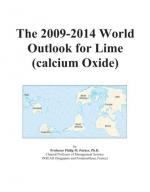|
This section contains 1,010 words (approx. 4 pages at 300 words per page) |

|
Overview
Calcium oxide (KAL-see-um OK-side) is an odorless crystalline or powdery solid that, in a pure form, is white to off-gray. It often appears with a yellowish or brownish tint to the presence of impurities, especially iron. Calcium oxide reacts with water to form calcium hydroxide (Ca(OH)2) with the evolution of significant amounts of heat. The compound is strongly caustic.
Key Facts
Other Names:
Lime; quicklime; burnt lime; calx; unslaked lime; fluxing lime
Formula:
CaO
Elements:
Calcium, oxygen
Compound Type:
Metallic oxide
State:
Solid
Molecular Weight:
56.08 g/mol
Melting Point:
2,898°C (5,248°F)
Boiling Point:
Not available
Solubility:
Reacts with water to form calcium hydroxide; soluble in acids; insoluble in alcohol and most organic solvents
Calcium oxide has been known since ancient times. The Roman writer Cato the Elder (234–149 BCE) described one method of producing the compound in 184 BCE. Another early Roman scholar, Pliny the Elder...
|
This section contains 1,010 words (approx. 4 pages at 300 words per page) |

|


